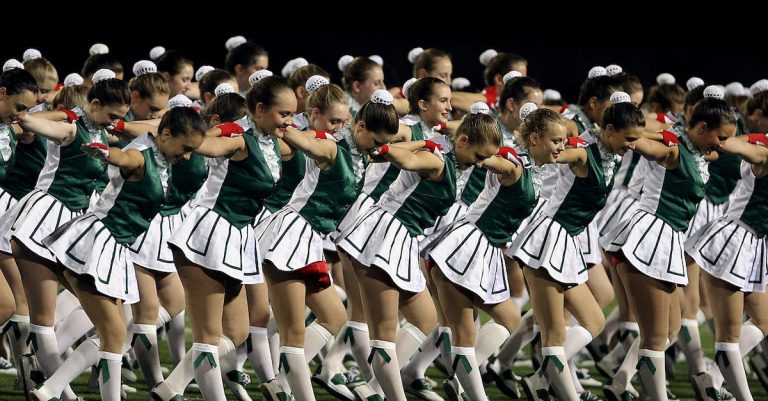As a student or parent, you may be wondering how old juniors in high school typically are. Understanding the age range for juniors can help you plan for college admissions and other important milestones.
If you’re short on time, here’s a quick answer to your question: Juniors in high school are usually between 16 and 17 years old.
In this article, we’ll explore the typical age range for high school juniors, factors that can impact their age, and how age affects their academic and extracurricular pursuits.
What is the Typical Age Range for High School Juniors?
Factors that can Impact a Junior’s Age
The typical age range for high school juniors is 16-17 years old. However, there are several factors that can impact a junior’s age. One of the most significant factors is when their birthday falls in relation to the school’s cutoff date. This date varies from state to state but is typically around September 1st. If a student’s birthday is after the cutoff date, they may start school a year later, which would make them a year older than their peers.
Another factor that can impact a junior’s age is if they have skipped a grade or repeated a grade in the past. Additionally, students who have transferred schools or have been homeschooled may have different age ranges compared to their peers.
How Age Affects Junior Year Academics
Age can have a significant impact on a student’s academic performance during their junior year. According to a study by the National Bureau of Economic Research, older students tend to outperform younger students in standardized testing. This is likely because older students have had more time to develop academically and emotionally.
However, being a year older than peers can also come with its own set of challenges. Older students may feel out of place or disconnected from their classmates, which can affect their motivation and engagement in school. Additionally, older students may be more likely to experience burnout or stress, as they have been in school longer and may have higher expectations placed on them.
How Age Affects Junior Year Extracurriculars
Age can also impact a student’s involvement in extracurricular activities during their junior year. Older students may have had more time to explore different interests and may be more likely to hold leadership positions in clubs or teams.
However, being a year older than peers can also create challenges when it comes to athletics. Some states have age restrictions for high school sports, which can prevent older students from participating in certain activities. Additionally, older students may be at a disadvantage when it comes to college recruiting, as college coaches may prefer younger players who have more years of eligibility.
Factors that can Impact a Junior’s Age
Junior year is a crucial time for high school students. It is when they start preparing for college and taking challenging courses. However, determining a junior’s age can be a bit confusing due to several factors.
Grade Level and School District Policies
The grade level of a student is the primary factor that determines their age. Generally, juniors are students in their third year of high school. However, school district policies can vary, and some districts may allow students to skip a grade or repeat a year, affecting their age and grade level.
Birthdates and Cut-Off Dates
Birthdates can also impact a junior’s age. Some students may have been held back in early grades, making them older than their peers. Cut-off dates for enrollment can also play a role. For example, if a school requires students to turn 16 before September 1st to enroll in high school, students born after that date would start a year later, making them a year younger than their peers.
Homeschooling and Alternative Education Options
Homeschooling and alternative education options can also affect a student’s age and grade level. Homeschooled students may follow a different curriculum or graduate early, making them younger than their peers. Alternative education options, such as online schools or vocational programs, may also have different grade levels, further complicating the determination of a junior’s age.
Ultimately, a student’s age should not be the sole factor in determining their academic success. It is essential to consider their individual abilities, interests, and goals when making decisions about their education.
How Age Affects Junior Year Academics
Junior year is a critical year for high school students as it sets the stage for their college admission process. However, one factor that can impact students’ academic performance during their junior year is their age. In this article, we will discuss how age affects junior year academics in terms of coursework and graduation requirements, advanced placement (AP) classes, and college admissions and standardized testing.
Coursework and Graduation Requirements
Most high schools have a set of graduation requirements that students must meet to receive their diplomas. These requirements typically include a certain number of credits in various subjects such as math, science, English, and social studies. However, the age at which students enter high school can impact the number of credits they need to earn each year to stay on track to graduate.
For instance, students who enter high school at age 14 or 15 may need to take additional courses during their junior year to ensure they meet the credit requirements for graduation. On the other hand, students who enter high school at age 16 or 17 may have already completed some of these requirements in middle school or freshman year, giving them more flexibility in their junior year course selection.
Advanced Placement (AP) Classes
AP classes are college-level courses that students can take in high school to earn college credit and demonstrate their readiness for higher education. However, the age at which students take these courses can impact their academic performance and success on AP exams.
Research has shown that students who take AP courses earlier in high school, such as sophomore year, tend to perform better on AP exams than those who take them later, such as junior or senior year. This is because earlier exposure to AP-level coursework can help students build the necessary skills and knowledge to succeed in these challenging classes.
College Admissions and Standardized Testing
Finally, the age at which students apply to college and take standardized tests such as the SAT or ACT can impact their college admissions prospects. Colleges typically consider a student’s age when evaluating their academic record and extracurricular activities, as well as their potential for success in college.
However, students who enter high school at age 14 or 15 may have fewer opportunities to participate in extracurricular activities and build a strong academic record before applying to college. On the other hand, students who enter high school at age 16 or 17 may have more time to develop these experiences and demonstrate their readiness for college.
| Age at Entry | Potential Benefits | Potential Challenges |
|---|---|---|
| 14-15 | More time to complete graduation requirements | Fewer opportunities for extracurricular activities and academic record building |
| 16-17 | More flexibility in course selection and potential for early college readiness | Less time to complete graduation requirements and potential for less competitive college admissions prospects |
How Age Affects Junior Year Extracurriculars
Junior year of high school is a crucial time for students to showcase their skills and interests beyond academics. Extracurricular activities provide opportunities for personal development, socialization, and college applications. However, the age of juniors can affect their participation in certain extracurriculars. Let’s explore how age influences sports and athletics, clubs and organizations, and volunteer and community service.
Sports and Athletics
Age plays a significant role in high school sports. The age limit for juniors varies depending on the state and league regulations. Typically, juniors should be 16 or 17 years old to participate in varsity sports. Students who are younger than their peers may have a disadvantage in terms of physicality and experience. On the other hand, older students may face stiffer competition when they compete against younger players. It’s essential for juniors to consult with their coaches and athletic directors to determine the appropriate level of competition.
Clubs and Organizations
Joining clubs and organizations is an excellent way for juniors to explore their interests and meet new people. However, some clubs may have age restrictions for their members. For instance, some clubs may require juniors to be at least 16 years old to participate in off-campus activities or hold leadership positions. Other clubs may allow freshmen and sophomores to join but prioritize juniors and seniors for leadership roles. It’s crucial for juniors to research the club’s policies and attend the meetings to see if it aligns with their goals.
Volunteer and Community Service
Volunteering and community service are valuable activities that can enhance juniors’ college applications and civic engagement. However, some volunteer opportunities may have age restrictions due to safety concerns or training requirements. For example, some nonprofit organizations may require volunteers to be at least 18 years old to work with vulnerable populations such as children or seniors. Other volunteer programs may have minimum age requirements for specific tasks, such as operating machinery or driving. Juniors should review the volunteer opportunities’ policies and seek guidance from their school counselors or community leaders to find suitable options.
Conclusion
In conclusion, the typical age range for high school juniors is between 16 and 17 years old, but this can vary depending on a number of factors. Understanding how age can impact a student’s academic and extracurricular pursuits can help you make informed decisions about your education and future goals.
If you have any questions or concerns about age and high school, it’s always a good idea to speak with your school counselor or academic advisor for guidance and support.






